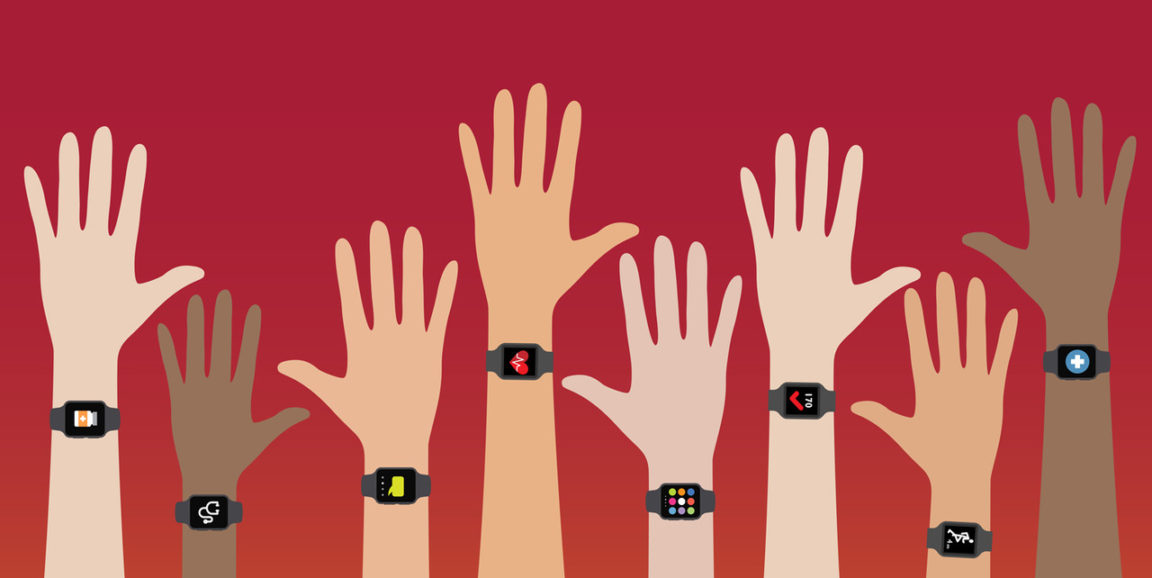According to the Centers for Disease Control and Prevention, each year in the United States 130,000 deaths and 750,000 hospitalizations can be attributed to one heart condition: atrial fibrillation. That makes this condition more lethal than diabetes or influenza — deadlier, in fact, than both diseases combined. And many people living with the condition aren’t even aware they have it: One 2018 study estimated that there are 700,000 undiagnosed cases of atrial fibrillation in the United States alone.
Atrial fibrillation is characterized by an irregular heartbeat, a misfiring of the heart’s electrical signals that causes it to, in the words of the American Heart Association, “work as if it’s enduring a marathon, even if the patient is relaxing in a chair.” Atrial fibrillation goes undetected because many of its symptoms — like fatigue or shortness of breath — don’t make us think our heart is beating with a dangerous cadence. Atrial fibrillation is also a condition that may not present symptoms in the moment of a diagnostic medical test, the primary one involving an electrocardiogram (ECG), which uses electrodes to detect the heart’s electrical signals.
But what if we could avoid these challenges by continuously monitoring a person’s heart rhythm? Would we catch more cases of undiagnosed atrial fibrillation? Last year, researchers here collaborated with Apple to test this hypothesis. Our goal was to see whether the company’s smartwatch — the first three generations of Apple Watch — could accurately detect irregular health rhythms, including atrial fibrillation, in study participants. (The most recent Apple Watch, which features a built-in ECG, isn’t part of the study.)
In November, the researchers published a paper in American Heart Journal outlining in detail the clinical trial’s design, goals, and progress thus far. It’s an update that should excite all of us, not just Apple Watch wearers.
More than 400,000 participants — a sample size larger than the population of New Orleans — have enrolled in the Apple Heart Study. Participants were required to have an Apple Watch and download an app on their iPhone, and researchers have been collecting participants’ heart-rate pulse data for the past year. An algorithm analyzes these readings and detects irregularities in a wearer’s pulse — a possible sign of atrial fibrillation.
Participants with sufficient episodes of an irregular pulse are notified and asked to schedule a visit with a doctor involved in the study, and then also sent ECG patches, which record the electrical rhythm of their hearts for up to a week. These steps allow researchers to explore important questions.
First, researchers can study the accuracy of the pulse readings: Do they match up in real-time with ECG patch readings?
Second, the ECG patches also enable researchers to explore, with a huge sample size, whether an irregular pulse is actually a reliable marker of atrial fibrillation. How many of those with irregular pulse readings actually end up being diagnosed with atrial fibrillation?
And third, researchers can see how effective technology is at inspiring action: How many participants sought the suggested medical attention?
Answering these questions is critically important and could help hundreds — maybe thousands — of people living with atrial fibrillation become aware of that fact and seek treatment. It is a future now within our reach.
The trial exemplifies the kind of cross-sector partnerships that are so vital and desperately needed in medicine and science today as new technologies open doors to clinical research that would not have been possible only a few years ago. Only by bringing together the resources of the private sector with the expertise of academia could we have conducted research at this speed and scale. It is a compelling model for 21st century medicine to consider.
And, of course, the trial also hints at the possibilities of technology — especially wearable technology — to pioneer care that’s more precise and preventive. The number of wearable devices sold worldwide in 2015 was 84 million — a number that CCS Insights, a market research firm, estimates will reach 245 million by 2019. Advances in using these devices to screen for diseases and dangerous health conditions could have huge ramifications for public health and empower millions of people with information to meaningfully engage in their own health.
It’s easy to lose sight of just how far we’ve come in a relatively short amount of time. The first Apple Watch came out in 2015; less than four years later, hardware from those watches and a mobile app are helping conduct the largest-ever screening of its kind for atrial fibrillation.
Lloyd Minor, MD, is dean of the Stanford School of Medicine and a professor of otolaryngology–head and neck surgery. A longer version of this piece originally appeared on his LinkedIn page.
Illustration from Dean Minor's LinkedIn




